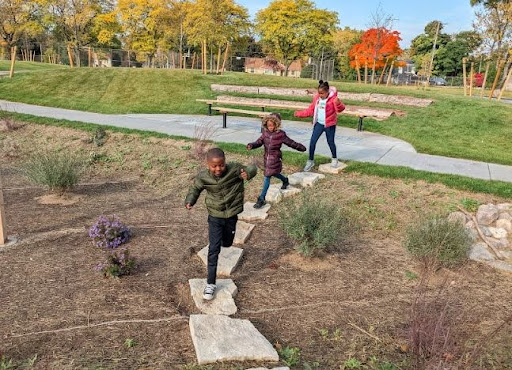
U.S. Department of Education Assistant Secretary Roberto Rodriguez recently said, “The green or sustainable schools movement has taken up the twin challenge of our lifetime, which is the future of our youth and the future of our planet.” Wisconsin’s 2024 honorees most certainly are part of taking up this challenge by reducing environmental impacts, improving health and wellness, and increasing environmental literacy.
Every day the educators at these schools, and all of Wisconsin’s U.S. Department of Education Green Ribbon Honorees and Green & Healthy Schools help students connect with where they live, explore local environmental and cultural topics, and engage in stewardship activities to instill a sense of responsibility and a lifelong commitment to sustainability, preparing our students to become environmentally conscious citizens.
Leading By Example: Great Ideas From Across the State
Starting with our youngest learners, Creative Learning Preschool and Child Care Center’s environmental stewardship is woven throughout the curriculum and practices as children ages six weeks to 5 years of age engage in project-based learning, field trips, and creative use of limited outdoor spaces to create food and native gardens. This 501(c)(3) non-profit center serves as a contracted 4K community site for the Madison Metropolitan School District, which provides equitable access to this learning.

The health and wellness of students and staff at Creative Learning Preschool is also supported by:
- mindful choice of commercial and natural cleaning products
- increasing ventilation and air filtration
- chemical-free pest control
- supporting nutrition
- offering outdoor experiences
- promoting sun safety
- offering behavioral health services
- partnering with community organizations
- seeking input from child care specialists, health care, and public health professionals to inform health and safety policies.

Nestled in a quiet neighborhood on the northwest side of Milwaukee, 300 students in K3-5th grade at Hawthorne Elementary School were actively involved in the planning and transformation of their schoolyard. This included replacing approximately 35,813 sq. ft. of asphalt with new green space and mixed-use recreation and educational areas.
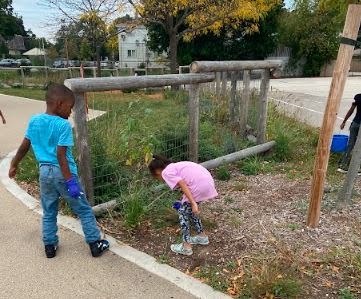
The Hawthorne Green Team Club educates students and staff, while also doing a weekly trash cleanup, recycling program, and managing a school garden. Field trips with Nearby Nature, Discovery World, visits from UWM Urban Ecology program, and the green schoolyard playground help students experience nature outside their classroom doors. These activities help Hawthorne students become critical thinkers who value teamwork, diversity, and social change in order to become future leaders and positive community members.
In the Bay View neighborhood within Milwaukee, the thousand K-8 students at Milwaukee Parkside School for the Arts take pride in their commitment to environmental sustainability and advocacy.
All students learn in the Aquaponics lab, hoop houses, and the school gardens through an extensive gardening and agricultural program with an emphasis on conservation practices.
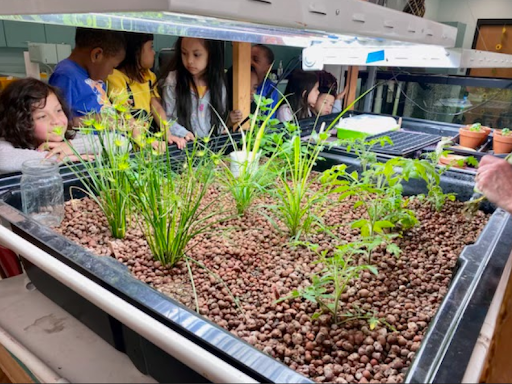
Bimonthly culinary activities engage families and focus on nutrient dense seasonal recipes from around the world. During the school day, students learn about where their food comes from, do taste testing to try new, healthy, garden-grown, and locally-sourced foods. They engage in hands-on experiences to learn the benefits of healthy eating and growing food with the support of AmeriCorps Farm to School grant. Classrooms work in the green spaces at the school, and lessons are arts-integrated, cross-curricular, and project-based in an effort to educate the whole child.
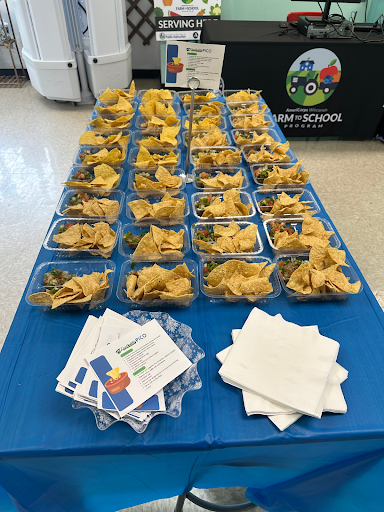
At the Northland Pines School District in Eagle River, students are immersed in a comprehensive outdoor physical education program that encourages exploration of the natural world. Students regularly hike, cross-country ski, snowshoe, and ride their bikes along picturesque trails.
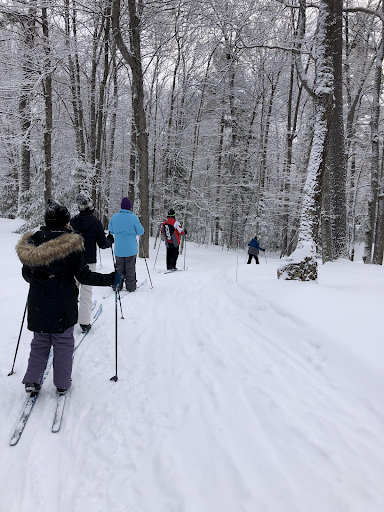
Moreover, students participate in nature walks and engaging nature hunts, experiencing the outdoors not only in physical education classes, but also in science classes. An active Farm to School program provides students with opportunities to learn about local resources, nutrition, and cooking. Students and staff utilize many outdoor spaces as extensions of classroom learning; on any given day, students may be found at the school pond, in an outdoor classroom, in a pumpkin patch, vegetable garden, feeding chickens, hiking local trails, gathering around a fire pit, in a school greenhouse or at the school forest.
Green Schools Prepare Students for Climate Change
In the face of tight budgets and competing priorities, schools have also taken action to protect students’ futures and the future of our planet. Students understand that we must adapt our practices and behaviors to curtail the impacts of Global Climate Change. Students of today are the leaders of tomorrow, and that tomorrow is one of change, uncertainty, but also opportunity.
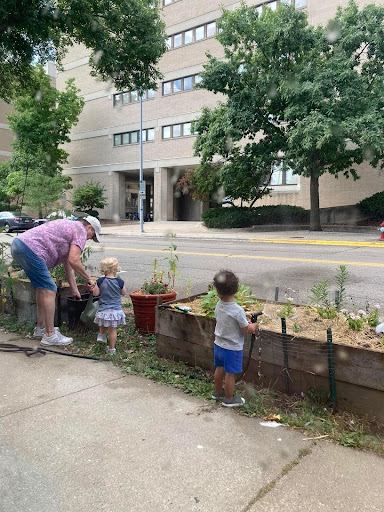
After conducting an energy assessment, staff at Creative Learning Preschool implemented prioritized recommendations within the budget to lower energy use and reduce their environmental impact. This included installing four rain barrels, offering TerraCycling to reduce waste, investigating composting options, promoting alternative transportation, seeking to support green energy and buying solar shares from MG&E’s SolarShare program. The organization’s efforts were recognized by the Dane County Office of Energy and Climate Change with a 2023 Climate Champion Award.
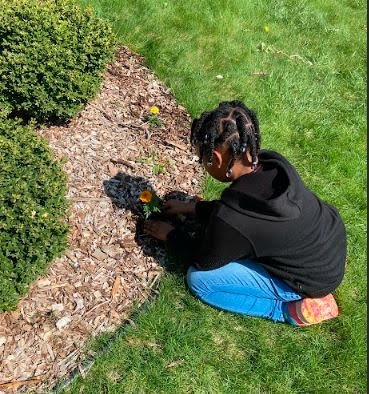
Hawthorne Elementary is preparing for increased storm events head on with a new schoolyard that has green infrastructure, including bioswales and a large underground cistern, in order to manage approximately 84,353 gallons of storm water per rain event. As part of the redevelopment, 39 new trees were planted and 5,000 square feet of native habitat was restored. An outdoor classroom area with a variety of native plants allow for unique spaces on the schoolyard that can represent natural Wisconsin ecosystems. Inside the building, Hawthorne has been installing LED lights, filtered bottle filling stations, and is committed to energy-saving practices, and students have been leading a school-wide compost initiative for six years.
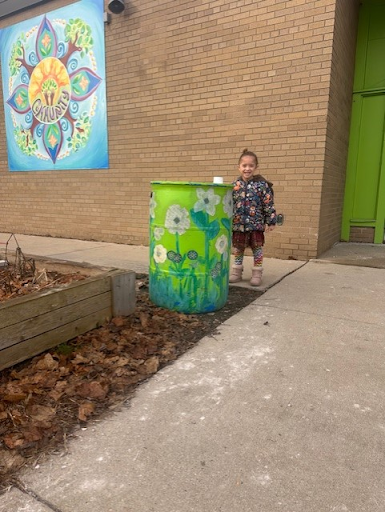
At Parkside School for the Arts, students are encouraged to walk and bike to school to save on gas emissions, and the addition of bike racks and raised crosswalks makes it safer for families to do so. Massive school renovations over the last five years have included installation of energy efficient windows, new ceiling panels, and a new efficient lighting system.
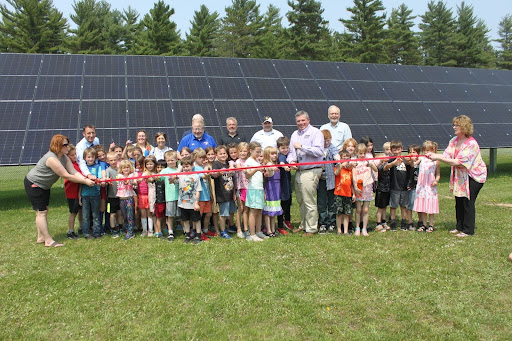
Northland Pines School District has installed solar panels and implemented energy conservation measures on all three campuses.
Congratulations to Creative Learning Preschool and Child Care Center, Hawthorne Elementary School, Parkside School for the Arts, and Northland Pines School District for your 2024 U.S. Department of Education Green Ribbon Schools recognition! May more Wisconsin schools follow your incredible examples.
For more information about environmental education efforts, Green and Healthy Schools Wisconsin or U.S. of Education Green Ribbon Schools nomination, reach out Victoria Rydberg-Nania, DPI’s environmental education consultant, or visit the DPI's environmental education website.
Portions of this text have been adapted from each school’s application and the U.S. Department of Green Ribbon Schools 2024 Highlights report.